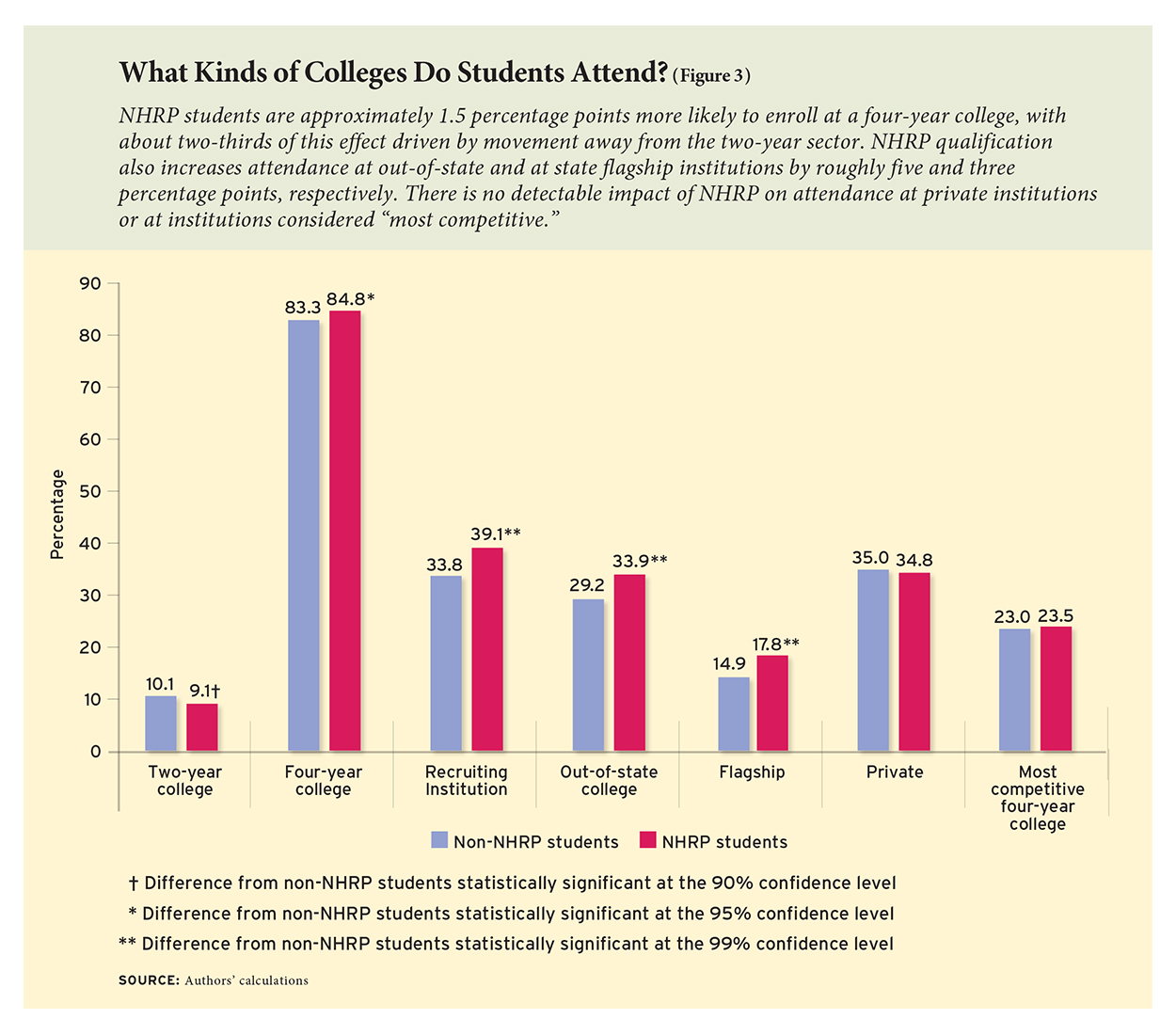Boosting college quality and success for high-scoring Hispanic students
Recognition program facilitates targeted higher-ed recruitment, improves outcomes
April 20, 2017—Despite recent gains in high school graduation rates, Hispanic college completion rates remain troublingly low: only 23 percent of Hispanic adults hold a postsecondary degree compared to 42 percent of all U.S. adults. But the College Board is working to turn this trend around with an intervention that recognizes high-performing Hispanic students and notifies postsecondary institutions of their achievement. In a new research article for Education Next, Oded Gurantz of Stanford University, Michael Hurwitz of the College Board, and Jonathan Smith of Georgia State University find that the program boosts Hispanic enrollment at four-year institutions as well as bachelor’s degree completion rates among those who were otherwise at the highest risk for dropping out of college.
The National Hispanic Recognition Program (NHRP) identifies the top 2.5 percent of Hispanic students each year based on their Preliminary SAT/National Merit Scholar Qualifying Test (PSAT/NMSQT) performance. As compared to white students with similarly strong PSAT/NMSQT scores, these approximately 5,000 Hispanic students are more likely to attend large, urban high schools with significantly more low-income, minority students. NHRP scholars and their high schools are notified of their achievement, encouraged to use this recognition on college and job applications, and are included in a list of recipients that the College Board shares with about 200 competitive, four-year postsecondary institutions looking to actively recruit high-performing Hispanic students with targeted outreach and financial incentives.
Analyzing a sample of 58,000 11th-grade Hispanic PSAT/NMSQT takers from the graduating high school classes of 2004 to 2010, the authors find that the NHRP dramatically alters college attendance patterns. NHRP scholars are five percentage points—almost 16 percent—more likely to attend NHRP recruiting colleges, compared to similar Hispanic students who scored just below the eligibility threshold. They are also 1.5 percentage points more likely to enroll at a four-year institution—with about two-thirds of this effect driven by movement away from the two-year sector—and five percentage points more likely to attend out-of-state institutions (see figure). NHRP-recognized students are also 1.3 percentage points more likely to earn a bachelor’s degree in four years.
The strongest effects of NHRP are seen among students who typically have the lowest college completion rates. Students from high schools with the highest concentrations of Hispanic students and those located in rural areas, as well as students whose parents have less formal education, experience the largest increases in four-year bachelor’s degree completion (4 to 8 percentage points) and in the likelihood of attending a college with a Barron’s ranking of “most competitive.”
“The results of this program show that high-achieving Hispanic students succeed at selective post- secondary institutions, and that any culture shocks from unfamiliar environments are not impeding completion,” say the authors. “These findings challenge the narrative that unique cultural circumstances and intense family and community ties shared by Hispanic students might impede their success at colleges far from home.”
To receive an embargoed copy of “Boosting Hispanic College Completion: Does high-school recruiting help more students graduate?” or to speak with the authors, please contact Jackie Kerstetter at jackie.kerstetter@educationnext.org. The article will be available Tuesday, April 25 on www.educationnext.org and will appear in the Summer 2017 issue of Education Next, available in print on May 24, 2017.
About the Author: Oded Gurantz is an Institute of Education Sciences fellow in the Stanford University Graduate School of Education. Michael Hurwitz is senior director at the College Board. Jonathan Smith is an assistant professor of economics at Georgia State University.
About Education Next: Education Next is a scholarly journal committed to careful examination of evidence relating to school reform, published by the Hoover Institution at Stanford University and the Harvard Program on Education Policy and Governance at the Harvard Kennedy School. For more information, please visit www.educationnext.org.



